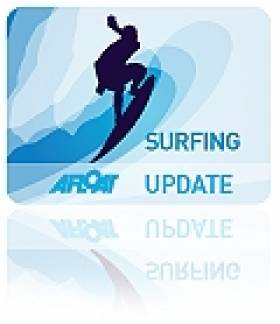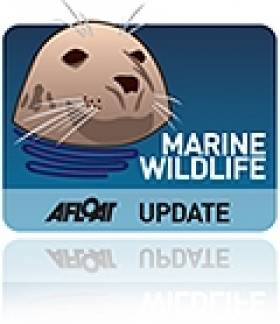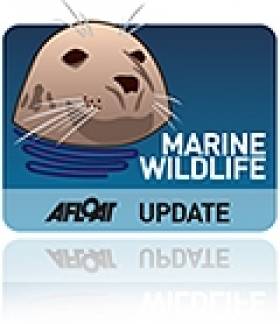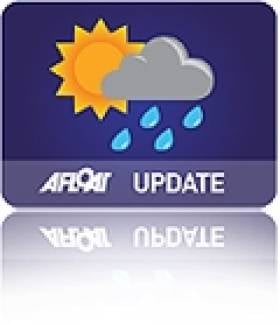Displaying items by tag: video
Watch Live Stream of the Volvo Ocean Race Galway Leg Now
#VOLVO OCEAN RACE - The final leg of the latest Volvo Ocran Race from Lorient to Galway is starting now - and you can watch the live stream of the action HERE.
Yesterday's Bretagne In-Port Race saw French team Groupama - which features Ireland's Damian Foxall on deck - clinch a dream home win, edging them closer to overall victory.
But as the Kerryman said just a few days ago, that victory is by no means assured, with 500 miles of turbulent Celtic Sea lying between the fleet and the finish line.
Irish Wheelchair User Joins Kitesurfing Clinic in Athens
#KITESURFING - Northern Ireland's Jenny Ridley will be among those joining a kitesurfing clinic for people with disabilities in Athens, Greece from this weekend, as Surfer Today reports.
The five-day workshop at the Karavi Beach Club in Schinias will be hosted by Christophe Martin, developer of a special kiteboarding seat for paraplegic athletes.
As previously reported on Afloat.ie, Jenny Ridley has been learning to kite on land under the tutelage of friend Jason McGrugan who has worked with her to design a custom seat and board that will enable her to get on the water.
And she's promised to do just that in Greece this week, joining many other abled and disabled riders in the warm Aegean waters.
Martin will demonstrate the latest techniques developed to teach kitesurfing for people with disabilities. Those taking part will get a chance to go on the water using modified catamarans to show how accessible watersports can to be to everyone.
Surfer Today has more on the story HERE.
Cross Cultural Surfing Project Focus of New Documentary
#SURFING - WorldIrish highlights a new documentary on Cross Culture Surf, a surfing exchange programme between Ireland and the Basque Country in northern Spain.
The video above was filmed in the Irish surfing hotspot of Lahinch in Co Clare - home to big wave surfer and Billabong XXL Award nominee Ollie O'Flaherty - during the first phase of the cultural exchange in April, as 15 Irish and 15 Basque surfers got to know each other better while riding the waves.
#ISLAND NEWS - Champion cliff diver Orlando Duque paid a visit to Cong in Co Mayo recently to give a taster of what we can expect when Red Bull Cliff Diving comes to the Aran Islands this August.
As the video above shows, the nine-time World Champion from Colombia dived from the unusual platform of a helicopter hovering high over the water at Ashford Castle.
But it will be just his fellow competitors, the rocks and the waves to contend with at the Serpent's Lair in Inis Mór on 3-4 August at the fourth stop of the 2012 World Series, as previously reported on Afloat.ie.
“The Serpent’s Lair is one of those places you only hear stories about,” said Duque ahead of the first ever World Series in 2009. “Finding this place and being able to dive there was one of the highlights of my career."
Killer Whales Surround Anglers in Lough Swilly
#MARINE WILDLIFE - The video above shows the moment when an angling boat was surrounded by a pod of killer whales at the mouth of Lough Swilly in Co Donegal.
Sea angler Kevin Doherty, whose boat was treated to the spectacle, told UTV News: "We knew ourselves at that moment we were going to witness something special."
Local wildlife experts say the orca family came from the Scottish Hebrides and as well known - but this is the first time the whole family group has been recorded together on Ireland's North coast.
Happy Outcome for Mayo's Stranded Minke Whale
#MARINE WILDLIFE - Conor McGuire and friends were taken by surprise when they came across a stranded minke whale in Clew Bay, Co Mayo - but thankfully this whale of a tale had a happy outcome.
As the Irish Whale and Dolphin Group (IWDG) reports, the group of friends videoed the scene as the 4-5m young minke whale attempted to free itself from the shingle at the edge of the shore.
The IWDG commented: "Sometimes it is hard to avoid the temptation to jump in and get involved in coaxing the cetacean back into deeper water.
"But hats off to Conor and friends, who quite rightly gave the whale as much time as it needed to correct the situation."
According to the IWDG, such stranding often end in tragedy "as the animal becomes disorientated and stressed, so this record is particularly unusual."
The group also noted "with interest" that the event occurred just before the biggest earthquake ever recorded in the North West region.
As previously reported on Afloat.ie, the epicentre of the magnitude 4 quake was close to the Corrib Gas Field off Co Mayo.
The IWDG said it will be closely watching the region "to see if there is any spike in unusual stranding events that may be linked to this seismic activity".
#VOLVO OCEAN RACE - The incredible finish of the latest leg of the Volvo Ocean Race wasn't the only drama on the high seas for one competing team.
Just days before CAMPER with Emirates Team New Zealand had the misfortune of stalling metres from the line in Lisbon on Friday night, they were involved in a near-miss with a whale in the North Atlantic, as the UK's Mirror reports.
The video above captures the team working quickly to alter their course to avoid the marine giant on their port side at a speed in excess of 20 knots.
It's that kind of quick thinking that separates the good from the great who take part on this round-the-world odyssey across the planet's toughest seas.
The CAMPER team currently lies fourth in the overall standings, 21 points behind new leaders Groupama.
Canadian Surf Pros Ride Ireland's Famous Waves
#SURFING - Credit goes to WorldIrish for a great find in this video featuring Canadian surfing pros Noah Cohen and Nico Manos on a recent trip to Ireland to sample our world-class waves.
The duo captured footage of their wave-riding escapades in the top surfing destination of Bundoran in Co Donegal, which hosted last year's Eurosurf championships.
#WEATHER - The Irish Times reports on video of what appears to be an over-water tornado or 'seaspout' off the coast of Sligo last week.
The video above was captured at Rosses Point on the afternoon of Monday 7 May by Graeme Salter.
“I’ve been going to Rosses Point since I was a child and have seen some mad weather, but never anything like this,” he said.
Seaspouts or waterspouts are most often associated with dark, flat-bottomed cumulus cloud formations. They are not true tornados in the strictest sense, as they are not formed by the rotating updraft of a supercell thunderstorm.
The footage is the second occurrence of a waterspout in Ireland in recent weeks, following the mini-twister filmed at Bray Head last month as a massive thunder, lighting and hail storm hit the capital, as previously reported on Afloat.ie.
#SURFING - Ireland's surfing scene is on the crest of a big wave, according to BBC News in its profile of Mullaghmore Head rider Ollie O'Flaherty ahead of the Billabong XXL Big Wave Awards.
As previously reported on Afloat.ie, Lahinch native O'Flaherty and Devon surfer Andrew Cotton are both nominated for the $50,000 biggest wave prize, to be announced in Anaheim, California on 20 May.
Both surfers raised the bar with their tow-in efforts among the giant swells off Mullaghmore in Co Sligo, defying the dangers involved.
Even so, O'Flaherty is lucky not to be nominated for the less auspicious 'wipeout of the year'.
"I've definitely had one or two pretty big scares," he said. "Last October I got wiped out and was stuck at the bottom of one wave and I got picked up, hit and dragged over the reef three times."
But the Clare wave rider insists: "The thrill outweighs the consequence for me."
BBC News has much more on the story HERE.







































































